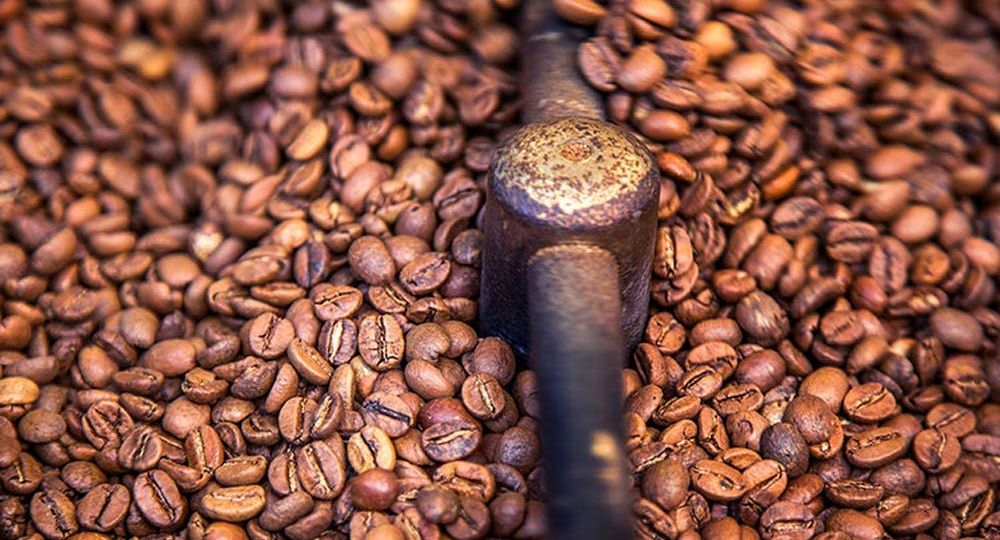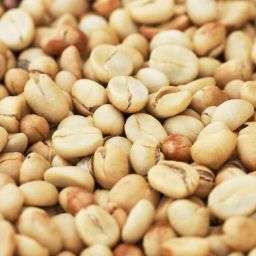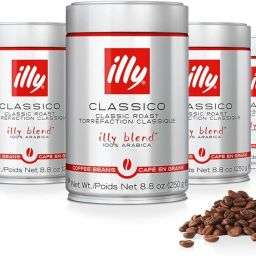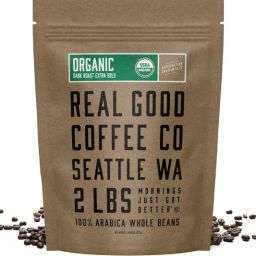
Understanding the shelf life of roasted coffee beans is crucial for anyone looking to enjoy their coffee at its best. The flavor and quality of coffee depend significantly on its freshness. Once roasted, coffee beans begin a natural degradation process, losing their aromatic and flavor compounds over time.
Proper storage is the key to extending the freshness of these beans, preserving the rich taste and aroma that coffee aficionados cherish. By implementing the right storage techniques, it’s possible to maintain the beans’ quality and extend their shelf life, ensuring every cup of coffee is as fresh and flavorful as possible.
Key Takeaways
- Importance of Proper Storage for Extending Shelf Life: The way roasted coffee beans are stored plays a pivotal role in determining their shelf life. Proper storage conditions can significantly slow down the degradation process, preserving the beans’ essential oils and flavors. This involves keeping the beans in airtight containers away from light, air, and moisture, which are the main factors that accelerate staleness.
- Difference in Shelf Life Between Whole Beans and Ground Coffee: Whole coffee beans tend to have a longer shelf life compared to ground coffee. This is because whole beans have a smaller surface area exposed to oxygen, slowing down the oxidation process that leads to staleness. Once ground, coffee’s exposure to air increases, accelerating the loss of flavor and aroma.
Factors Affecting the Freshness of Roasted Coffee Beans
Several factors contribute to the degradation of coffee beans, including:
- Light: Exposure to light can speed up the oxidation process, leading to a quicker loss of flavor and aroma.
- Air: Oxygen in the air reacts with the coffee beans, causing them to become stale and lose their vibrant flavors.
- Moisture: Humidity can lead to mold growth and further degrade the coffee beans.
- Temperature: High temperatures can accelerate the degradation process, while too low temperatures can cause condensation when beans are taken out of storage.
Signs of Stale or Expired Coffee Beans
Identifying stale or expired coffee beans is key to ensuring the best coffee experience. Signs include a loss of aroma, a change in color, or the presence of mold. Beans that no longer emit a strong coffee scent or have a bland taste are likely past their prime. Properly assessing the freshness of coffee beans can prevent the disappointment of a lackluster brew.
Freshness and Flavor Profile
The shelf life of roasted coffee beans is a dynamic aspect that can vary significantly, ranging from a few weeks to several months, largely influenced by storage conditions. Immediately after roasting, coffee beans enter their peak flavor period, which can last from several days up to a month. However, as time progresses, the beans gradually lose their aromatic oils and volatile compounds, leading to a noticeable decline in flavor and aroma.
The roasting date thus becomes a critical indicator of freshness; beans consumed closer to their roasting date tend to offer a richer, more vibrant flavor profile. Over time, the complex flavors and aromas that characterize freshly roasted coffee beans begin to fade, underscoring the importance of timely consumption to enjoy the full spectrum of coffee’s sensory experiences.
The Role of Storage Conditions
Optimal storage conditions for roasted coffee beans are pivotal in preserving their freshness and extending their shelf life. Storing beans in airtight containers shields them from oxygen, one of the primary catalysts for the oxidation process that accelerates flavor degradation. Moreover, a cool, dark environment further contributes to preserving the beans’ quality by mitigating the risk of heat and light exposure, both of which can induce the loss of delicate flavor compounds.
Conversely, improper storage conditions, such as exposure to direct sunlight, high temperatures, and moisture, can have detrimental effects on the beans. Light and heat can trigger the oxidation of coffee oils, leading to a stale taste, while moisture can encourage mold growth, further compromising the beans’ quality and safety. Thus, adherence to recommended storage practices is essential for maintaining the integrity and enjoyment of roasted coffee beans over time.
Container Types and Environment
When it comes to preserving the freshness of roasted coffee beans, the choice of storage container plays a crucial role. Airtight containers are fundamental in minimizing exposure to air, thus slowing the oxidation process that degrades the beans’ flavor.
Containers with one-way valves offer an added advantage by allowing the natural emission of carbon dioxide from the beans while preventing air from entering. This feature is particularly beneficial since freshly roasted beans continue to emit carbon dioxide, which can increase internal pressure and potentially compromise the seal of an airtight container without a valve.
Refrigeration and freezing of coffee beans are subjects of debate among coffee enthusiasts. While these methods can prolong the shelf life of beans, they must be approached with caution to avoid condensation, which can spoil the beans. If choosing to refrigerate or freeze, ensure the beans are in a truly airtight container to prevent moisture from seeping in. It’s also advisable to let the beans come to room temperature before opening the container to avoid condensation.
Handling and Usage Tips
Managing how you handle coffee beans can significantly affect their longevity and flavor. Buying in small quantities that match your consumption rate ensures that you are always using beans at their freshest. For those looking to store beans over a longer period, freezing in airtight containers can be a viable option. This method is especially useful for whole beans, as it preserves their essential oils and aromas for extended periods.
Opting for whole beans over ground coffee also plays a vital role in preserving freshness. Whole beans have a reduced surface area exposed to air, thereby slowing down the oxidation process. This means that whole beans maintain their flavor and aroma longer than ground coffee, which stales more rapidly due to increased exposure to oxygen. Therefore, grinding beans just before brewing is recommended to ensure the freshest taste.
Extending Shelf Life Through Proper Techniques
To further extend the freshness of roasted coffee beans, advanced storage methods such as nitrogen flushing and vacuum sealing are employed. Nitrogen flushing involves replacing the oxygen in a coffee bag with nitrogen, a non-reactive gas, to slow down oxidation and maintain freshness. This method is particularly effective for pre-packaged beans, offering an extended shelf life even before opening.
Vacuum sealing, on the other hand, removes air from the package, significantly reducing the oxygen level and thus, the rate of oxidation. For home storage, vacuum-sealed jars can be an excellent solution. These jars, when combined with a vacuum sealer, can create an almost oxygen-free environment for the beans. This method is beneficial for long-term storage, especially in situations where electricity might be unreliable, as it does not require constant power to maintain its effectiveness.
FAQs
What is the difference in shelf life between whole and ground coffee? Whole coffee beans typically have a longer shelf life than ground coffee because they have less surface area exposed to oxygen, reducing the rate of oxidation. Ground coffee, with its increased surface area, tends to stale faster.
How can you tell if coffee beans have gone bad? Stale or bad coffee beans often lose their robust aroma and may have a bland or off taste. Visual signs of mold or a noticeable change in color can also indicate that the beans have gone bad.
Do coffee beans expire? Yes, coffee beans can expire or become stale over time. While they may not spoil in the traditional sense, their flavor and aroma quality degrade, affecting the taste of your coffee.
Final Thoughts
Understanding and implementing proper storage techniques are paramount for maximizing the shelf life and flavor of roasted coffee beans. The difference in enjoyment between freshly stored beans and those that have been improperly stored can be significant.
Encouraging experimentation with various storage methods can help coffee enthusiasts find the best solution that aligns with their consumption habits and preferences, ensuring every cup of coffee is as fresh and flavorful as possible.









